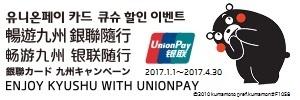ARTICLE
JAPANESE HOLIDAY IN KYUSHU (KAGOSHIMA) (Part 1) November 2015
13/12/2015
- Author : daveS
- Country of Origin : United Kingdom
- Age : 60's
- Gender :male
Two intrepid English pensioners took off from Manchester on Tuesday the 3rd November, to tour the southern Japanese Island of Kyushu (and to escape from the dark, damp English winter!), a delay possibly due to the foggy conditions but arrived in Munich in time for the connection to Tokyo Haneda. After a quick exploration of Tokyo left for the main part of the holiday in Kyushu.
Arrived by plane in Kagoshima and got the bus to the main station where our Hotel was, and was greeted by the sound of music, in the station. Here they are into a 2 week festival; unfortunately we had missed the fireworks. But the whole area still had a real buzz about it. The station was a real hub of activity with a department store, lots of shops and eating areas. A good information centre where we bought a ticket for 2 days whereby we had easy access on most buses. So after putting our cases in the hotel, went for a lunch. It turned out to be our dinner as much larger than expected, the specialist pork and fishcakes of the area. We were sat in front of the chef so he could make sure we got the right things. The same thing happened the following night, just wandered into a place just outside the station; we were greeted well, as you are everywhere in Japan, and given a seat overlooking the cooking area. This proved very entertaining for them and us. I did get a book out as they first tried to explain the food, then the chef got onto his i-phone, speaks into it and so of course an immediate translation, except with some of the translations into English we had still no idea of what we were eating. We started with a lot of raw fish, of which some we recognised. After many courses, out came cook your own food in the broth. However we were well supervised and the chef was putting the right food into the container over the burner at the right time. This eating experience was typical of our meals all over Kyushu cities. The resort hotels were very different, but more about that later. The first afternoon, took the circular town bus to get a feel of the area, and got off at Shrogama and had a good view of Sakurajima volcano; Kagoshimo is twinned with Naples, but the only thing they seem to have in common is the volcano.
The tram tracks here have grass between them, this is a concrete track made from volcanic material then grassed over to help with cooling, there is meant to be a tram which cuts the grass, but we never saw that.
We visited his former gardens and industrial area at Senganen on our next day.
This area, was the first area in Japan to be industrialised in the 19th century. During this Edo period Japan was a closed country but the local Shogun ignored this. The local man was called Satsuma, grew the oranges which we know by his name and a major export. Also by trading with the west they needed to develop their own iron works, pottery and glass and so this is where Japan's Industrial revolution started. Also against official law students were sent to the exhibition in Paris to advertise their products and a statue opposite the station shows this. The entrance to Senganen greeted us with the usual shops!! Could easily spend a few thousands on intricate wood work and the odd hundred on glass ware and pottery, still being made locally. In fact did buy a T shirt as I had decided incorrectly not to bring any. Also David sported into a cap for the sun, we had cold hats supposedly for the mountains. In fact the gardens proved very interesting, (we picked up an English audio), with the old industrial site. Plenty of chrysanthemums on display and the trees were being pruned from cherry pickers and ladders with what look like scissors. A whole selection of gardens, very interesting and just a couple of foolish people thought it would be a good idea, to do a short hike up a mountain side to see a waterfall and the odd view. Where was the waterfall? The Japanese know better! We then had a very well presented lunch and then visited the museum and glass works there. This took us more or less the rest of the day. We caught a bus to the coastal area, where again a lot of entertainment was going on.
The next morning we caught the jet foil to Yakushima Island, rain seems to be greeting us here.
Arrived in the rain, then it poured, second day fine, then next day poured and left in rain then cloud. It is said to have 35 rainy days a month!! It is also referred to as the Galapagos of the orient, and the Alps in the ocean. This is because it is subtropical round the coast and sub alpine up the tops. In the spring time the tops are full of rhododendrons. At a lower altitude there are cedars. These are thousands of years old and then start to be intermingled with the cinnamon camphor. The coastal area is farming, many sweet potatoes which are turned into bread, very edible and sake. Bananas and pineapple are also around. It is said a villager would have spent 10 days at sea, for mackerel and flying fish , 10 days farming and 10 days in the mountains. Triangular rocks are seen by the fisherman as sacred so 2 hand claps are given when passed. The JR hotel we stayed in was very comfortable and from our room spectacular views of the coast.
A very Japanese breakfast and evening meals, but the 2 set meals we had pre-ordered were the same. Here had the first onsen so far and was welcoming especially after getting so wet. It showed that I must buy some new rain gear. The hotel like many others does not have a bar or coffee shop but luckily there is a french patisserie only just down the road. The following morning, we went out with our hired guide (from NZ); found him via trip advisor. So we started on our tour round the island a World Heritage site, the coastal road is narrow in the north and practically empty, but did manage to see a minor road crash, not sure what happened (our guide says it is often with tourists in hire cars). The local monkeys just groom themselves on mass in the middle of the road and the women are boss. The sika deer seem to like to hang out with the monkeys. These animals are lighter than in Kyushu. The major birds which we saw are Kites and other birds are pigeon, wagtails, 2 types of robin . There is a coral reef so there are tropical fish and the water temperature is never below 19degrees C. The waterfalls seem to more or less tumble vertically down the granite and only a little lava and alluvial deposits on the coastal plain. It was the wrong time of year to see the turtles. They over winter in Mexico.
In the afternoon we ventured on to one of the 2 inland roads which go into the mountains and did an 80 minute walk, being warned that when wet the tree roots are very slippery, so we bore this in mind when we walked on our own the following day. So here we saw huge cedars and cinnamon camphor. The old giant trees which remain are the one which were not so accessible for logging, which ceased in 1965. This meant the population decreased by 50% so it is now around 7,000 and a computer firm has moved in to take up some of the capacity of the HEP station, which is under used. We also visited the 2 museums on the island. one after our soaking walk and the other before we flew out to Fukuoka.
When we arrived in Fukuoka we were met from the plane by the lady who has been arranging all our holiday for us; she immediately got us sorted with more information, more pamphlets and the reservations for our future train journeys; all ultra efficient! Again we stayed at the JR Hotel train station adjoining a huge shopping complex. The top floor had a roof garden and the 2 floors below had restaurants which provided good food. Also Christmas came on Friday, so plenty of music with the switching on of the lights.
The next morning we visited Dazaifu, famous for its shrines.
Here we met huge coach parties who seemed to be only interested in one shrine. For us the modern museum was an excellent highlight, really teaching us a lot about this part of Japan (we had not realised the close connections between Kyushu and Korea in the past.) and one, quiet Japanese temple which had maples changing colour.
In the afternoon we returned to the old royal park in Fukuoka and it was easy to make out the castle ruins there and have good views of the city. It was that night that Japan had an earthquake off Kagashima where we had been the previous weekend. (We felt the second quake when we were in Nagasaki the following evening.) Woke up and it felt as if we were on a boat. (No damage and no fuss from anyone)





![Kyushu Tourism Information [ Japan ]](/blogcontest/img/common/bnr_onsen_island.png)

